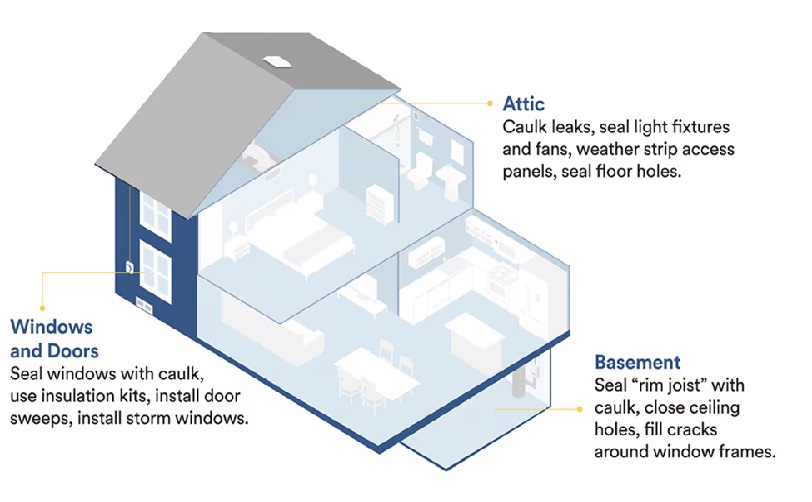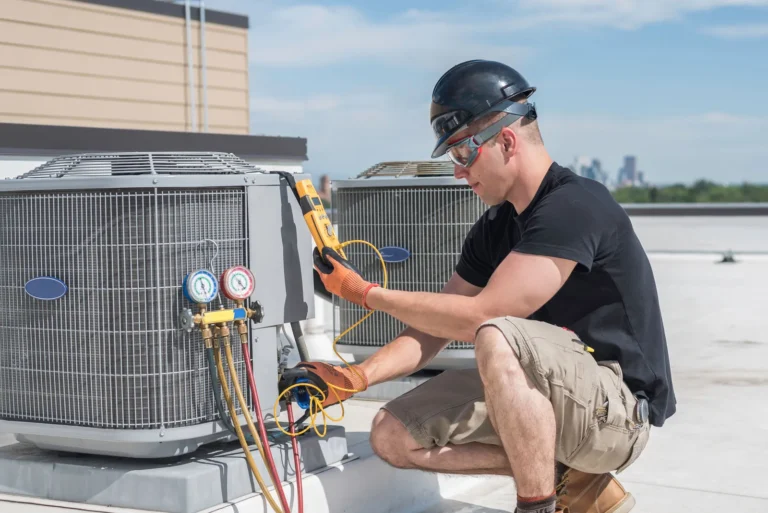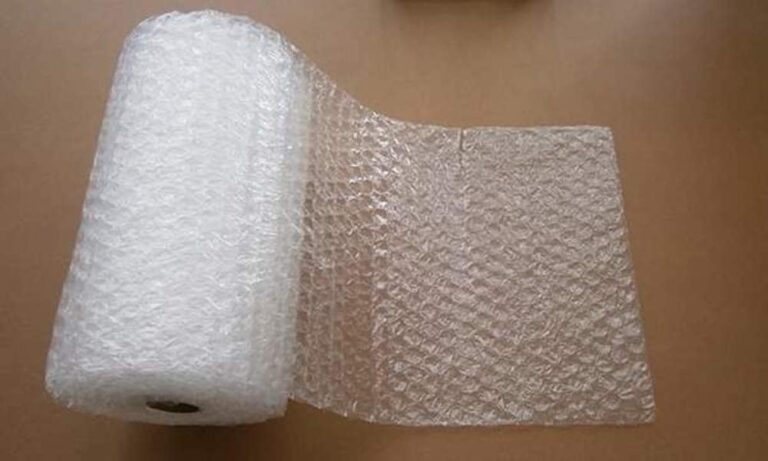
Keeping your home properly ventilated is important, but uncontrolled air leaks can increase your energy bills and make your home less comfortable. By sealing these drafts and insulating your home well, you can save on energy costs, make your home more comfortable, and even improve your home’s overall health.
Key Areas to Insulate in Your Home
There are three main areas to focus on when improving home insulation: the attic, windows and doors, and the basement. Here are some simple, effective tips to help you get started.
Attic Insulation Tips

Since hot air rises, the attic is a common place for heat to escape, which reduces your home’s energy efficiency. Here are some steps to properly insulate your attic:
- Find and Seal Leaks: Look for stained or frosty spots, which indicate leaks. Once you locate a leak, use caulk to seal it, let it dry, and then cover it with insulation.
- Seal Light Fixtures and Fans: If you have light fixtures or fans below an unheated attic, add airtight boxes to cover them from the attic side. For flush-mount fixtures, use spray foam to seal any cracks around the electrical boxes. Always disconnect the power until the foam cures.
- Weather-Strip the Attic Access Panel: Attach foam-board insulation to the back of the attic hatch and add weather-stripping around the edges to prevent air leaks.
- Seal Holes in the Attic Floor: Use caulk or spray foam to close up gaps around pipes, vents, and wires. If you have old or broken wiring, replace it first.
Windows and Doors Insulation Tips
Windows and doors are natural points where air can escape or enter your home, but leaks near these areas can lead to energy waste. Here’s how to ensure they’re properly insulated:
- Seal Window Edges with Caulk: Inspect all window edges and use caulk to seal any gaps. If window panes, frames, or hardware are damaged, repair or replace them.
- Install Window Insulator Kits: Use window insulator kits to keep cold drafts out and warm air in. These kits are available in various sizes, are easy to install, and have a clear film that stays up all season long.
- Add Door Sweeps and Weather-Stripping: Install door sweeps at the bottom of doors and weather-stripping around the edges. Do this for doors leading outside as well as those to unheated areas, such as the garage or a three-season porch.
- Install Storm Windows: Storm windows can be installed over existing windows to enhance insulation. They are cheaper than new windows and can provide a similar insulating effect. Look for storm windows with low-e coating for better energy efficiency.
Basement Insulation Tips
Basements can be a major source of air leaks, allowing outside air to seep into your home and reduce energy efficiency. Here are some tips to insulate your basement effectively:
- Seal the Rim Joist: Use expanding foam or masonry caulk to seal the rim joist, the area where the cement foundation meets the wood frame. Also, seal any foundation cracks with insulating caulk.
- Close Basement Ceiling Holes: Fill gaps around pipes, wires, and ducts in the basement ceiling with caulk, spray foam, or filler to prevent air leaks.
- Seal Cracks Around Window Frames: Use insulating caulk to fill cracks around basement window frames. If the window isn’t needed for ventilation or as a fire escape, you can permanently seal it with caulk.
By focusing on these key areas in your home, you can improve insulation, reduce energy waste, and create a more comfortable living space. Whether you’re dealing with the attic, windows and doors, or the basement, these tips will help you achieve better energy efficiency and savings.







